Honeywell F300E1001 Handleiding
Honeywell
Niet gecategoriseerd
F300E1001
Bekijk gratis de handleiding van Honeywell F300E1001 (4 pagina’s), behorend tot de categorie Niet gecategoriseerd. Deze gids werd als nuttig beoordeeld door 50 mensen en kreeg gemiddeld 4.9 sterren uit 25.5 reviews. Heb je een vraag over Honeywell F300E1001 of wil je andere gebruikers van dit product iets vragen? Stel een vraag
Pagina 1/4

OWNER’S GUIDE
69-0756-07
F50F and F300E Electronic
Air Cleaners
CONTENTS
Operating Your Electronic Air Cleaner ....................... 2
Getting the Most From Your Electronic Air Cleaner 2
Cleaning Prefilter(s), Cell(s) and Postfilter(s) ......... 3
How Electronic Air Cleaning Works ............................. 5
Before You Call for Service .............................................. 6
Resideo 10 Year Ultraclean Coil Guarantee™ .......... 6
Limited Five-year Warranty ............................................ 7
Product Registration ......................................................... 8
M38810

F50F AND F300E ELECTRONIC AIR CLEANERS
69-0756—07 4
CAUTION
Burn Hazard.
Can cause personal injury.
Allow cell(s) to cool completely in dishwasher and
at tend of wash cycle or wear protective gloves.
Washing the cell(s) in your automatic
dishwasher
Hot water can accumulate in the tubes supporting the
collector plates.Tip the cell(s) so these tubes can drain.
IMPORTANT
• Check your dishwasher Owner’s manual. Some
manufacturers do not recommend washing elec-
tronic cell(s) in their dishwashers.
• If the dishwasher has upper and lower arms, posi-
tion the cell(s) carefully to allow good water circu-
lation.
• Be careful to avoid damaging the cell(s) when
placing them in the dishwasher. Broken ionizer
wires or bent collector plates are not covered
under the Warranty.
• Very dirty cell(s), especially from tobacco or cook-
ing smoke, can discolor the plastic parts and the
lining of some dishwashers.This discoloration is
not harmful. To minimize it, wash the cell(s) more
frequently or try a different brand of detergent.
• Do NOT allow the dishwasher to run through the
dry cycle. This bakes on any contaminants not
removed during the wash cycle and reduces air
cleaner efficiency.
1. Put the cell(s) on the lower rack of the dishwasher
with the airflow arrow pointing up. It may be neces-
sary to remove the upper rack. Do not block water
flow to the upper arm.
HINT: Lay a few large water glasses between the spikes on
the lower rack, and rest the cell(s) on them so the spikes do
not damage the aluminum collector blades.
2. Using your regular dishwashing detergent, allow the
dishwasher to run through the complete wash and
rinse cycle. Do not use the dry cycle. To avoid burns,
let the cell(s) cool completely before removing, or
wear protective gloves when removing the cell(s).
Remember that water may be trapped inside the
cell(s) plates. Tip the cell(s) so these tubes can drain.
3. Wipe the ionizer wires and contact board on the end
of the cell using your thumb and forefinger with a
small, damp cloth.
4. Inspect the dishwasher. You may want to rerun the
wash and/or rinse cycle with the dishwasher empty if
you see dirt or residue from washing the cell(s). If
dirt or residue seems excessive, wash the cell(s)
more often or try a different detergent.
CAUTION
Hazardous Chemical.
Can cause personal injury.
Do not splash detergent solution in eyes.
Washing the cell(s) in a tub
• Wear rubber gloves to avoid prolonged detergent
contact with your skin.
• Keep detergent and solution out of reach
of children.
NOTE: Always wash the cell(s) first, then the prefilter(s),
to keep heavy prefilter lint from getting caught in
the cell(s).
1. Use a large enough container, such as a laundry tub
or trash container, to hold one or both cell(s).
NOTE: Sharp corners on the cell(s) can scratch the sur-
face of a bathtub.
2. Dissolve about three-fourth cup of automatic dish-
washer detergent per cell in enough hot water to
cover the cell(s). If the detergent does not dissolve
readily, or forms a scum on the water, try another
brand, or use softened water.
3. After the detergent has completely dissolved, place
the cell(s) in the container and allow to soak for 15 to
20 minutes or until water cools. Agitate them up and
down a few times and remove. Repeat steps 2 and 3,
if necessary, for very dirty cells.
4. Next, wash the prefilter(s) the same way. Empty and
rinse the wash container.
5. Rinse the cell(s) with a hard spray of very hot water;
rinse the tub clean, then fill the tub with clean hot
water and soak for 5 to 15 minutes. Rinse until the
water draining from the cell(s) and prefilter(s) no
longer feels slippery.
6. Soak cell(s) in a final clear water rinse for ten min-
utes.
7. Wipe the ionizer wires and contact board on the end
of the cell using your thumb and forefinger with a
small, damp cloth.
Replacing electronic air cleaner
components
1. Inspect the cell(s) for broken ionizer wires and bent
collector plates. Repair, as necessary, or call your
contractor for service.
2. Slide the prefilter(s) into the upstream prefilter
guides.
3. Slide the air cleaner cell(s) in so the air flow arrow
points downstream and the handle(s) face outward.
4. Firmly close the access door.
5. Turn on the air cleaner. If the cell(s) and prefilter(s)
are wet, the neon light may not come on and you
may hear arcing. If the arcing is annoying, simply
turn the air cleaner off for two to three hours or until
the cell(s) are dry.

F50F AND F300E ELECTRONIC AIR CLEANERS
69-0756—07 6
Electronic air cleaner vs standard furnace
filter
The regular furnace filter collects mainly large, visible
particles that reach the filter. Its main purpose is to protect
the furnace and air conditioner blower. The electronic air
cleaner collects these large particles plus many of the
smaller, mostly invisible particles. Its purpose is to reduce
indoor air pollution as well as to protect the blower, air
conditioning coils and heat exchanger.
Ozone and the electronic air cleaner
Electronic air cleaners generate a very small amount of
ozone, about 0.005 to 0.010 parts per million (ppm). The
amount is highest when the air cleaner is new.
The average person can detect the odor of ozone in
concentrations as low as 0.003 to 0.010 ppm. The U.S.
Food and Drug Administration, and Health and Welfare
Canada recommend that indoor ozone concentration
should not exceed 0.050 ppm. As a comparison, the
outdoor ozone level in major cities is sometimes higher
than 0.100 ppm.
If desired, the ozone generated by the air cleaner can be
reduced by asking your dealer to:
• Install an activated carbon filter downstream of the air
cleaner, or
• Adjust the air cleaner power supply to reduce ozone
production.This adjustment reduces ozone production
about 20-25 percent, but also reduces air cleaning
efficiency about seven to ten percent.
About lint or “white dust"
White dust is made up of particles that settle out of the air
before they get to the return air duct. You can help prevent
this white dust from settling by running your fan
constantly and:
• Be sure the return registers are not blocked with
furniture.
• Be sure the discharge ducts are clean (best done before
installing the air cleaner).
• Be sure your clothes dryer is vented to the outside and
is not plugged.
• If you have new rugs or drapes or new woolen blankets,
be aware that the lint from these items will reduce with
age.
• In new or remodeled homes, plaster dust or paint
pigment may contribute to white dust, but will reduce
with time.
• Use of a humidifier may contribute to white dust,
especially if filled with undistilled water.
BEFORE YOU CALL FOR
SERVICE
If...
Then...
Electronic air cleaner doesn't seem to be working
1. Make sure the furnace or air conditioner blower is
running.
2. Make sure the access door is firmly closed and
latched. If door is not closed properly, an interlock
keeps the air cleaner off.
Arcing (snapping) seems too frequent
1. If the electronic cell(s) are wet from washing, turn
the air cleaner off for two to three hours.
2. Check the cell(s) for broken ionizer wires or bent
plates. Repair if necessary.
3. Wash cell(s) and prefilter(s) if dirty.
Neon light on air cleaner does not come on
1. Make sure the furnace or air conditioner fan is run-
ning.
2. Make sure the access door is firmly closed.
3. Make sure the On-Off switch is in the On position.
4. On models without the Solid State Performance
Indicator, if the electronic cell(s) are wet, check again
in two to three hours.
You smell ozone and find it objectionable
Call your heating and air conditioning dealer.
RESIDEO 10 YEAR UltraClean
COIL GUARANTEE™
Guarantee
If you properly maintain your
new Resideo Electronic Air
Cleaner (EAC), Resideo
guarantees that if your indoor
coil requires cleaning within the
next 10 years, Resideo will pay
to have it professionally cleaned by a qualified contractor:
— 75% of the cost (up to $150) when installed with a
Resideo Coil Irradiation Ultraviolet Air Treatment
System or
— 50% of the cost (up to $100) if a Resideo EAC is
installed without a Resideo Coil Irradiation Ultraviolet
Air Treatment System).
• The UltraClean Coil Guarantee™ applies to any Resideo
Electronic Air Cleaner properly installed with a heat
pump, air conditioner or high efficiency furnace that is:
brand new, less than one year old; or more than one
year old with the indoor coil professionally cleaned by a
qualified contractor prior to installation.
• Proper maintenance on the EAC means: keep the power
switch in the On position, periodically verify power
operation, and wash electronic cells periodically as
specified in this Owner’s Guide.
• Proper maintenance on the Electronic Air Cleaner
means: periodically clean the lamp glass and replace
UV lamps as specified in the Owner’s Guide.
Send to:
Resideo 10 Year
UltraClean Coil Guarantee
Customer Care, MN10-1461
1885 Douglas Drive North
Golden Valley, MN 55422
Product specificaties
| Merk: | Honeywell |
| Categorie: | Niet gecategoriseerd |
| Model: | F300E1001 |
Heb je hulp nodig?
Als je hulp nodig hebt met Honeywell F300E1001 stel dan hieronder een vraag en andere gebruikers zullen je antwoorden
Handleiding Niet gecategoriseerd Honeywell
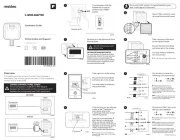
30 Juli 2025
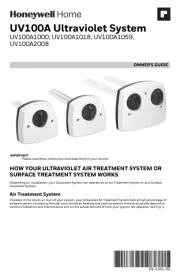
20 Mei 2025

3 Juli 2023

16 Juni 2023

1 Juni 2023

18 Mei 2023

13 Mei 2023

10 Mei 2023

9 Mei 2023

9 Mei 2023
Handleiding Niet gecategoriseerd
- Truma
- Key Digital
- Outwell
- Sumiko
- CFH
- Asus
- Symmons
- Doona
- Kyoritsu
- Bayco
- Tanaka
- Axxess
- Maxxmee
- Voltcraft
- Hotpoint
Nieuwste handleidingen voor Niet gecategoriseerd
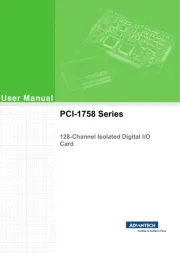
30 Juli 2025
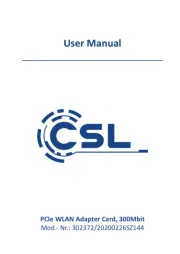
30 Juli 2025
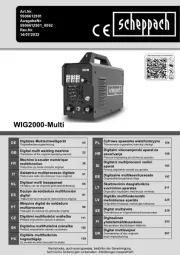
30 Juli 2025
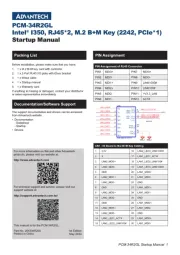
30 Juli 2025
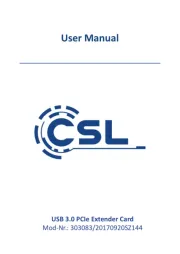
30 Juli 2025
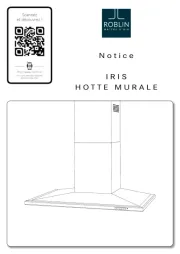
30 Juli 2025
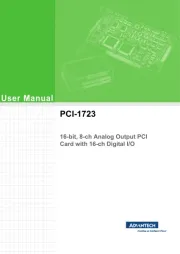
30 Juli 2025
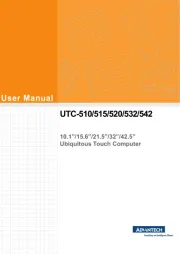
30 Juli 2025
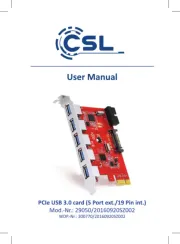
30 Juli 2025
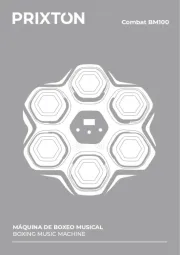
30 Juli 2025